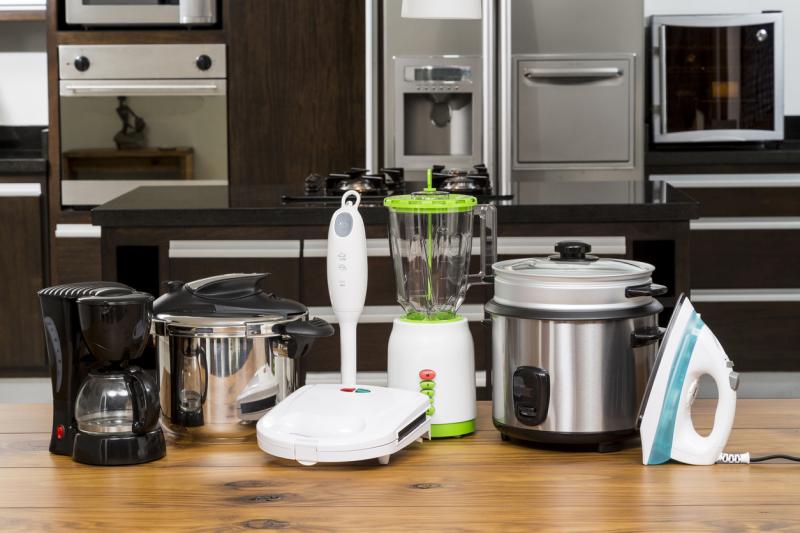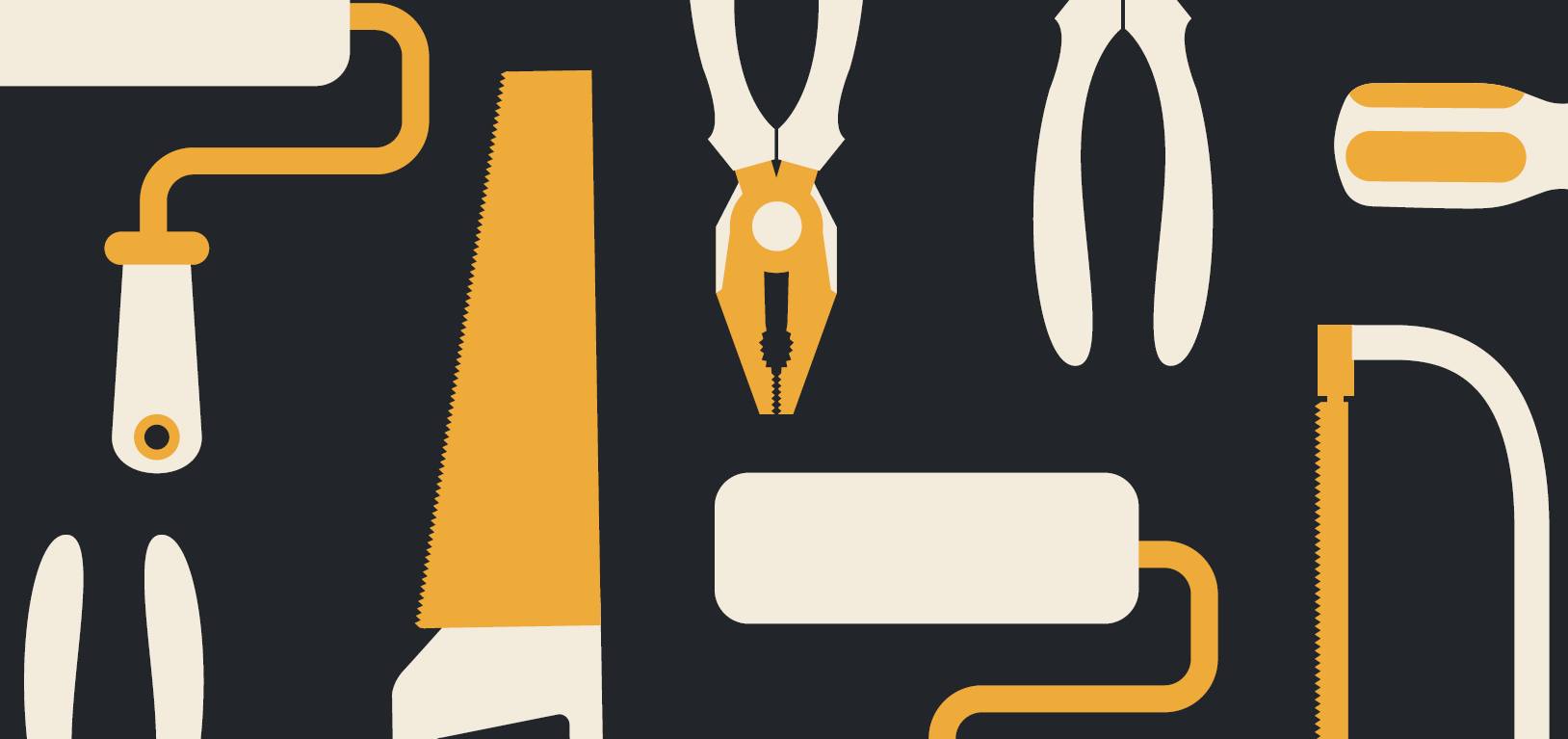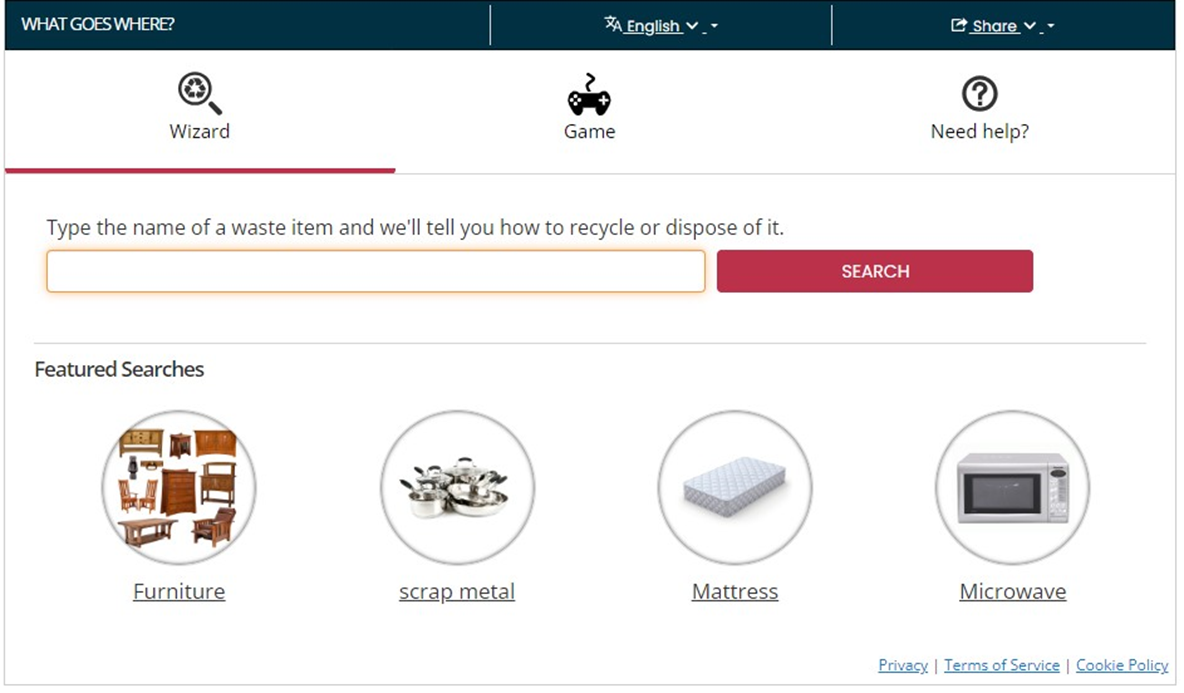Post written by Emily Bohr, Outreach Specialist, OEEC
The average household has more than a dozen appliances. These include big-ticket items like refrigerators, ovens, washers, and dryers, and smaller pieces like microwaves, toasters, and blenders. We tend to take these items for granted as long as they’re working and meeting our needs.
Broken household appliances fall under the category of “e-waste” or “e-scrap”. According to the U.S. Department of Energy (DOE), only 17.4% of e-waste was collected and responsibly recycled globally in 2019. And, modern appliances with new and expensive features require maintenance more frequently and are often less efficient than their older counterparts.
What should we do when these appliances reach the end of their useful life or are no longer needed, even if they still work? Do they have to be discarded and wasted? The answer is a resounding "no!"
Here are four ways to responsibly deal with unwanted or outdated appliances:

Reuse
If you are upgrading to more energy-efficient models, consider donating your older, working appliances to community organizations, or selling them independently, rather than trashing them. This will ensure that they are reused until they are no longer in working order, maximizing their potential.
- Donate large or small appliances to Habitat for Humanity or The Salvation Army with FREE pickup.
- Bring small appliances to donate them to Goodwill.
- Check within your neighborhood for local thrift stores and faith-based organizations that take donations.
Repair
If you have an appliance that seems to have some life left in it but isn't functioning properly, figuring out how to repair it can save you money and extend its usability.
- Start by identifying the symptoms of the issue and consult the appliance handbook for troubleshooting tips; many common problems and their solutions are listed there! If you don't have the handbook or manual, you may be able to find it online. You may also find repair guides or videos specific to your appliance model, or websites like YouTube or dedicated repair forums.
- If the problem seems too complex, involves electrical components, or if DIY repairs are not your thing, we recommend consulting a professional to avoid any potential hazards.
- You can also check out Fix-It Clinics hosted by the Fairfax County Public Library and Fairfax County’s Department of Public Works and Environmental Services (DPWES). Bring in your small, broken household appliances and volunteers will help you return them to working order. Search for “Fix-It Clinic” on the Library’s events page to find the next scheduled clinic.

Repurpose
If you’re a creative type and want to make the most of your older appliances, consider repurposing certain elements yourself before recycling the rest.
- Microwave Turntable to Lazy Susan: Convert the glass turntable from an old microwave into a functional Lazy Susan for organizing condiments or small kitchen items by attaching a rotating mechanism (found at local craft stores) to the bottom.
- Broken Blender or Coffee Pot to Planter: Blenders and coffee pot glass containers can be repurposed as unique planters! Remove the blades and any sharp or unneeded components, then fill the container with soil and your favorite plants.
- Washing Machine Drum to Planter: After thoroughly cleaning the drum of a washing machine, you can fill it with soil and plants. The holes in the drum provide excellent drainage, making it perfect for outdoor use, and adding a bit of industrial charm to your garden or patio.
- Refrigerator Shelves as Garden Trellises: Wire shelves from your old fridge can serve as trellises for tomatoes or other climbing plants. Secure the shelves vertically in your garden using stakes or by tying them to existing structures, such as fences or posts. This not only promotes healthy plant growth but also adds visual interest to your garden space.
Have a DIY idea to add? Send us an email at oeecinfo@fairfaxcounty.gov!
Recycle
Is your dishwasher or microwave at the end of its lifecycle? Appliances (and electronics!) that cannot be repaired or reused should be recycled. Most are made primarily of metal and can go into the scrap metal piles at Fairfax County disposal facilities.
Use DPWES’s “Recycle or Trash - What Goes Where?” wizard! Simply type in the name of your item and they’ll tell you how to recycle or dispose of it.
Note: Click the photo or link above to go to the Recycling Wizard on DPWES's website.
“White goods” appliances that serve a cooling function, like refrigerators, freezers or dehumidifiers, contain refrigerants, which are potent greenhouse gases if released into the atmosphere. Fortunately, these gases can be captured and recycled! Bring these appliances to the I-95 Landfill Complex and the I-66 Transfer Station, where they will remove the refrigerant onsite for a fee before recycling the appliance. Learn more about residential disposal fees with DPWES.
Repurchasing
When you need to repurchase an appliance, use the ENERGY STAR Rebate Finder to select your newer, energy efficient model and associated rebates. When purchasing a new appliance, ask your preferred retailer if they offer hauling away the old appliance and recycling it for you for free.
Reusing, repairing, repurposing and recycling your old or unwanted appliances not only benefits the environment, but helps end the linear cycle of consumption and waste and contributes to a more sustainable, circular economy. Learn more about the circular economy on our Climate Matters blog.
Learn More

Emily Bohr has served as OEEC's outreach specialist since 2022, supporting the office’s communications and public outreach. She holds a degree in Environmental Studies from George Mason University.
Climate Matters is the blog of Fairfax County’s Office of Environmental and Energy Coordination, where we share stories, insights and information related to climate change and environmental sustainability. Posts are written by knowledgeable and passionate OEEC staff members and guest authors. To read all blog posts, visit Climate Matters.


